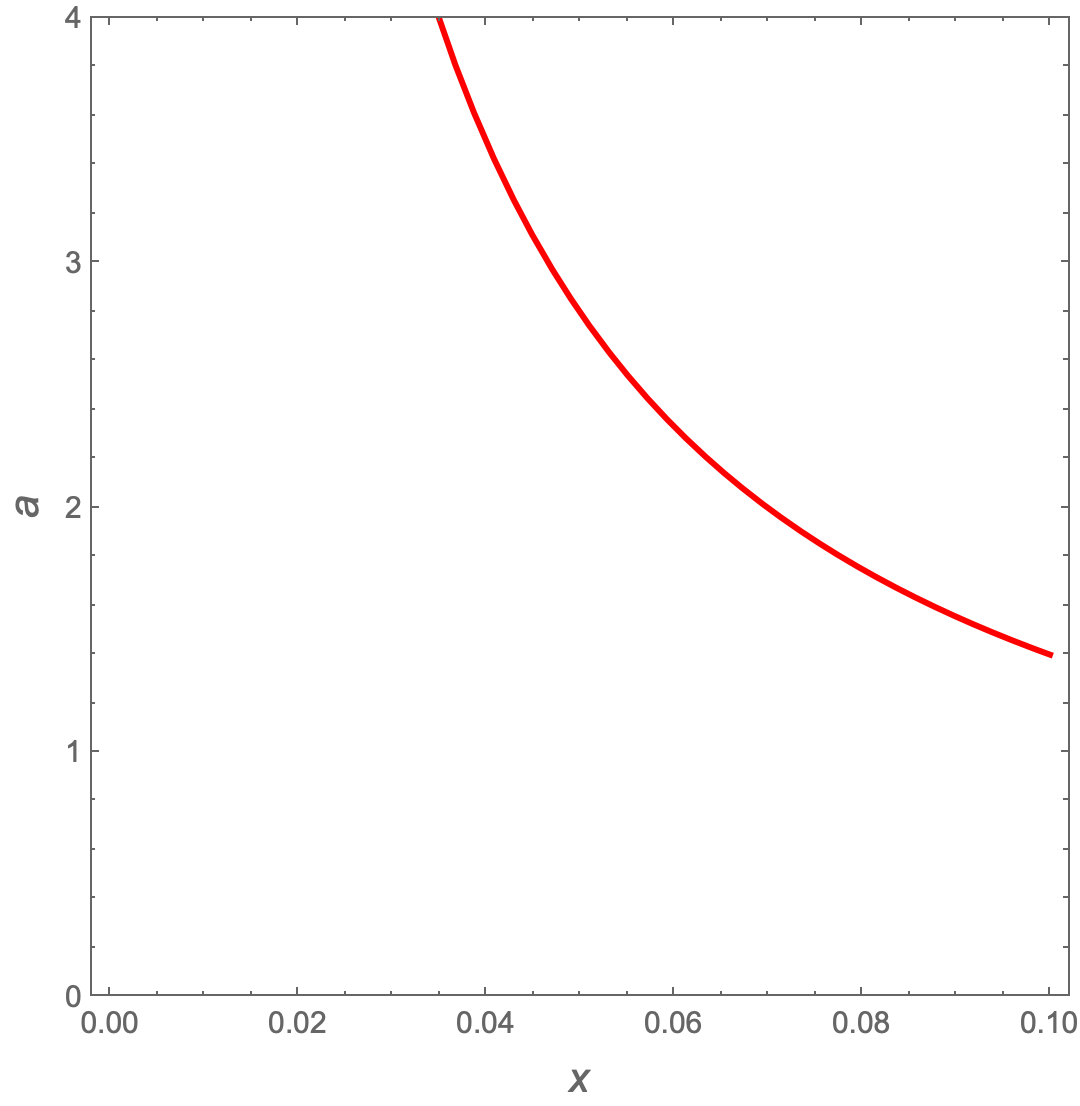Context to understand the question
Suppose that I have the next equation
sol = ParametricNDSolve[{y'[t] == a y[t], y[0] == 1}, y, {t, 0, 10}, {a}]
And I make a Contour Plot of this equation
ContourPlot[y[a][x] /. sol, {x, 0, 0.1}, {a, 0, 4},PlotLegends -> BarLegend[Automatic,LegendMarkerSize -> 180, LegendFunction -> "Frame", LegendMargins -> 5, LegendLabel -> "y[a][x]"], Frame -> True, FrameLabel -> {{"a", ""}, {"x", ""}}, BaseStyle -> {FontWeight -> "Bold", FontSize -> 14}]
Next I obtain a specific line of this ContourPlot
ContourPlot[y[a][x] /. sol, {x, 0, 0.1}, {a, 0, 4}, Frame -> True, FrameLabel -> {{"a", ""}, {"x", ""}}, BaseStyle -> {FontWeight -> "Bold", FontSize -> 14},
Contours -> {1.15}, ContourStyle -> Directive[Thick, Red],
ContourShading -> None]
Quesiton
Is there an "easy" way to obtain an equation for the red line, I mean the function $a(x)$?
I need the function, to make calculations, for example $(a(x))^{1/2}$.
"Long" way to obtain the equation for the red line
I usually take a image of the the graph and use webplotdigitizer to extrac the points of the graph and after I aproximate the extracted points with a polinominal function, however this prodedure can be slow.





